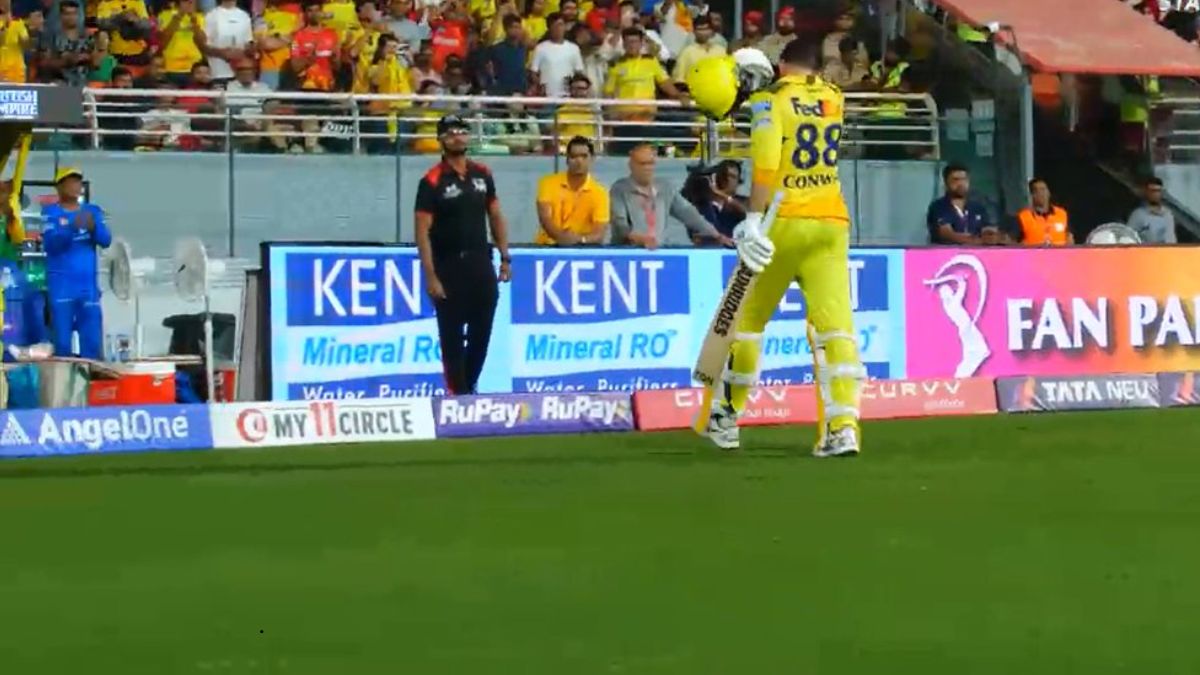In a dramatic tactical twist, Chennai Super Kings (CSK) opener Devon Conway was retired out during their match against Punjab Kings (PBKS) on April 8, sparking fresh conversations around whether IPL teams are now leveraging this rare strategy as a “second Impact Player” hack.
The incident took place in the 18th over of CSK’s chase of 220, when Conway, batting on 69 off 49 balls, was seen jogging off the field with Ravindra Jadeja coming in to replace him. With the team needing 49 runs from the final 19 balls, Conway’s inability to accelerate prompted the CSK management to pull the trigger on a bold tactical call — retire him out in hopes of injecting more firepower into the dying overs.
Interestingly, this comes just days after Mumbai Indians’ controversial move to retire out Tilak Varma in their game against Lucknow Super Giants (LSG). Tilak had struggled to get going, scoring 25 off 23 balls, and with two overs left, the management sent in Mitchell Santner instead. The decision sparked criticism on social media, with fans and pundits questioning whether such calls are in the “spirit of the game.”
However, Mumbai Indians head coach Mahela Jayawardene defended the move, stating it was purely tactical and aligned with modern-day cricket strategies. “In the modern age, it’s more tactical. I don’t see how different it is. As a batter, sometimes you struggle to get going. It was my decision to throw someone else in to get those two hits,” Jayawardene explained in a pre-match press conference ahead of their game against RCB.
With two such high-profile retire-outs already occurring in IPL 2025, a pattern is beginning to emerge. Coaches seem increasingly comfortable using this option as a calculated weapon, particularly when a set batter is unable to match the required run rate in the death overs.
While the Impact Player rule already allows teams to substitute one player at any point in the match, this new trend of retiring out a struggling batter mid-innings seems to offer teams a second chance at optimization, effectively giving them another strategic substitution without needing a formal rule change.
It also raises questions about the evolution of T20 tactics, where data-driven decisions and match-up strategies are starting to redefine conventional norms. For some fans, it may blur the lines of sportsmanship, but for team managements and analysts, it’s a perfectly legal, razor-sharp move to tilt the balance in crunch situations.
As IPL 2025 progresses, this tactic could very well become the norm rather than the exception. With coaches like Jayawardene endorsing its use and other franchises observing the benefits, the idea of “retiring out” might just become the latest chapter in T20 innovation — one that challenges tradition while embracing cricket’s ever-evolving tactical landscape.


